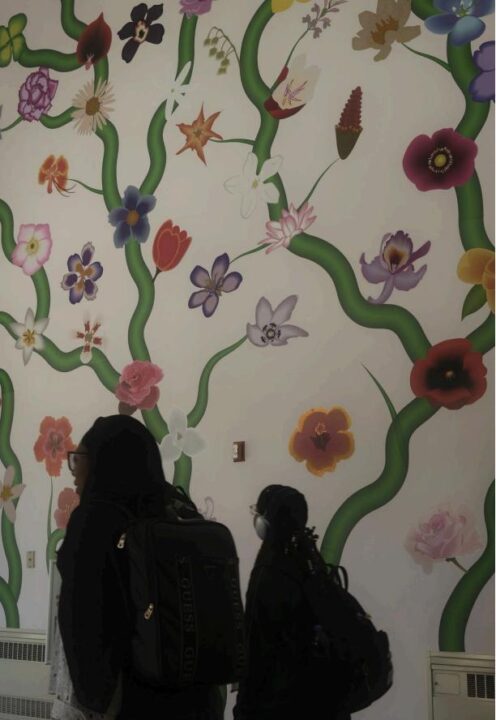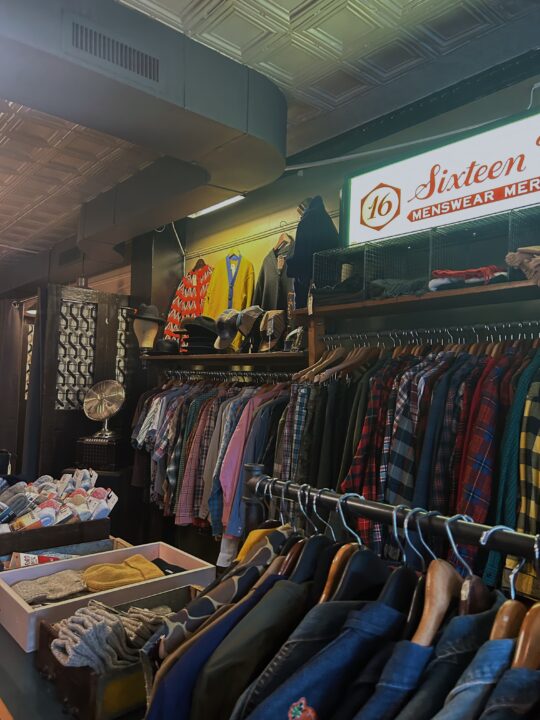“Southern Rites,” a multimedia traveling exhibition that features the work of self-described “visual activist” Gillian Laub, is the current exhibition at the Center for Art, Design and Visual Culture at the University of Maryland, Baltimore County. On Oct. 28, 2020, the CADVC hosted a virtual tour and artist talk with Laub on Webex (now available online). This event allowed Laub and Maya Benton, the curator of “Southern Rites,” to shed more light on the inception of the exhibition, both in general and relating to its installation at UMBC.
Laub photographed and interviewed residents of Montgomery County, Georgia over a ten-year period. She emphasized during the virtual tour that she maintains connections with her subjects, and she was able to include follow-up quotes from many of them in the exhibition. In addition to the photographs and printed quotes, Laub included a selection of facsimiles of artifacts and a video that plays at the back of the gallery. The next paragraph begins to discuss the content of the exhibition, which includes references to violence and might be triggering to some readers or viewers.
In “Southern Rites,” Laub uses all of these methods to document people in Montgomery County, who were involved with a high school that held racially segregated proms through 2009. It was Laub’s piece about the county in The New York Times Magazine that sparked a national outcry, forcing the school to integrate the proms starting in 2010. Laub also documents how, in 2012, Justin Patterson, a young Black man, was shot and killed by Norman Neesmith, a white man, in Montgomery County. Laub contextualizes the events with text on the walls, while also letting her subjects speak for themselves by pairing their photographs with their quotes. She feels that these two elements are inextricably linked.
Benton and CADVC Executive Director Symmes Gardner revealed in the lead-up to the Oct. 28 virtual tour that the late CADVC Research Professor and Chief Curator Maurice Berger worked with Benton in the early days of planning “Southern Rites” as an exhibition. Berger had insisted that it come to UMBC, and this planning was the last exhibition project that he worked on for the CADVC.
The traveling exhibition, which is currently installed in the CADVC gallery in the Fine Arts Building, is one of three forms that “Southern Rites” takes. An exhibition catalog and an HBO documentary film are the two other major components of Laub’s storytelling repertoire for this project. In-person visitors can reserve free tickets online, both to walk through the gallery space and to attend screenings of the 87-minute documentary. Members of the UMBC community can screen the documentary for free by signing up online.
The CADVC worked with the exhibition team to create a virtual gallery, which simulates an in-person experience by allowing the viewer to click through a 3D-rendered set of images of the gallery space. Laub stated during the virtual tour that the photos, quotes and artifacts in the exhibition move chronologically, and in the virtual gallery this works best by turning to the right after the first piece on the first wall. Most of the text is readable in the engine, but there are embedded links to transcriptions of all the text that make it easier to read. The video that plays in the back of the space is a short film that uses the audio from Neesmith’s 911 call after he shot Patterson.
Through reserving tickets, the Webex recording, access to the documentary, and the virtual gallery, “Southern Rites” is available to UMBC students until Dec. 12. The virtual gallery in particular is potentially shocking and detailed regarding a seeming microcosm of systemic racism in the United States. It is absolutely worth taking the time to experience.


